Gilbert U-238 Atomic Energy Lab (1950-1951)
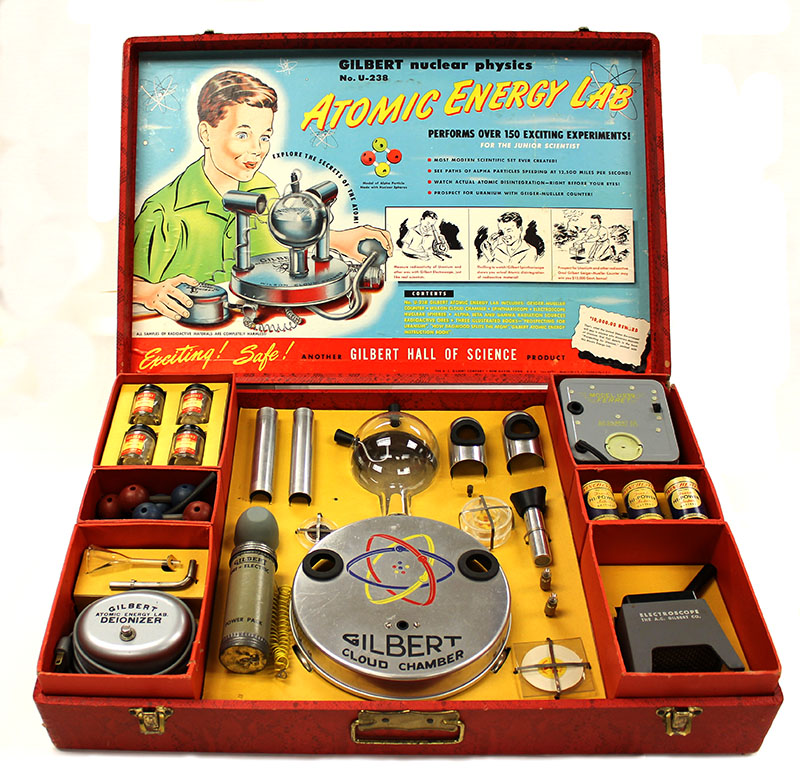
The A. C. Gilbert Company’s U-238 Atomic Energy Lab might not have been the first, but it was the most elaborate, “atomic” educational set ever produced for children.
Its high price (ca. $50) and sophistication were the reasons Gilbert gave for the set's short lifespan: 1950 and 1951. Today, it is so highly prized by collectors that a complete set can easily go for more than 100 times the original price.
Before some of us get too excited, let’s consider what Dr. Grace Langdon had to say (Bend Bulletin, October 21, 1950):
“It stresses the peace-time role of atomic energy... Not a hint of the A-bomb in the whole kit.”
Damn!
Sorry. That slipped out. My apologies.
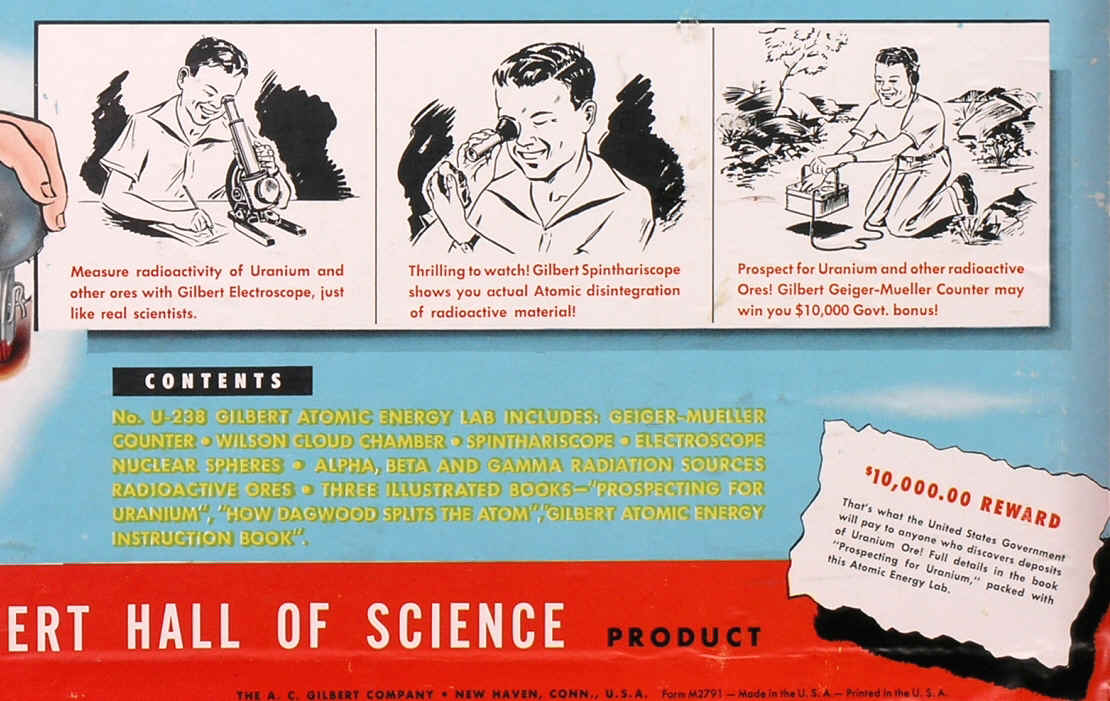
The set came with four types of uranium ore, a beta-alpha source (Pb-210), a pure beta source (Ru-106?), a gamma source (Zn-65), a spinthariscope, a cloud chamber with its own short-lived alpha source (Po-210), an electroscope, a Geiger counter, a manual, a comic book (Dagwood Splits the Atom) and a government manual "Prospecting for Uranium."
Other Gilbert sets (e.g., the No. 11 Atomic Energy set) continued to carry the spinthariscope, the ore and the manual. In addition, the Geiger counter could be purchased separately.
Two Versions of Gilbert's U-238 Atomic Energy Lab
There were two versions of the Atomic Energy Lab. The first (and rarest) was described in the 1950 Gilbert Toys American Flyer Trains catalog. It came with a tan-colored case. The second version, with a red case, appeared in the 1951 Gilbert Toys American Flyer Trains catalog. The contents in the two versions seem to have been the same, but they were arranged differently. A possible exception is that two different types of electroscope seem to have been used in the first version of the set.
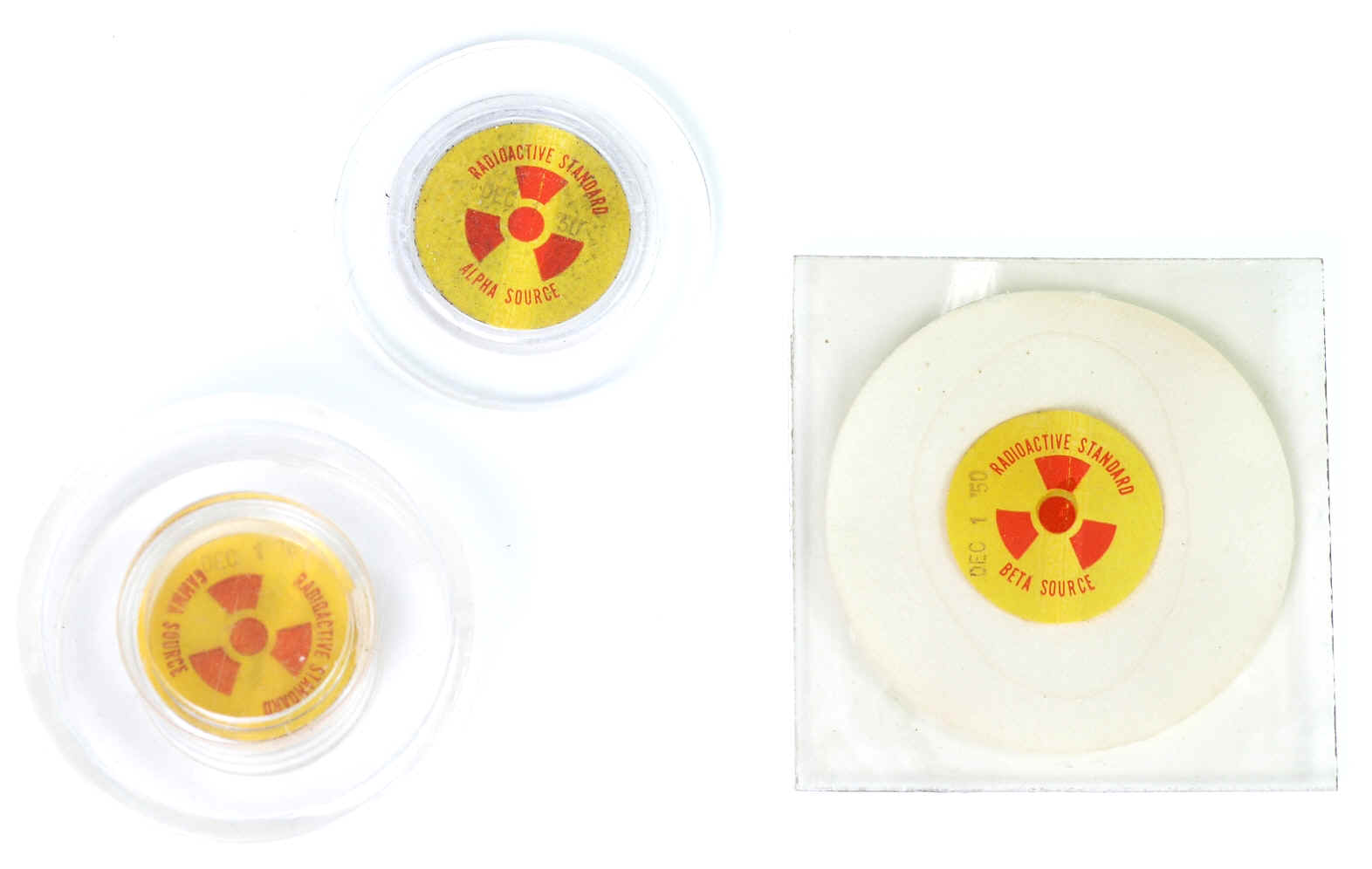
Gilbert first announced the development of the Atomic Energy Lab in February of 1950. Although images of the first version were employed in newspaper advertisements as late as December of 1951, I believe that it had been replaced with the second red-cased version well before Christmas of 1950.
The earliest image I have seen of the second version of the lab was a photo in the November 23, 1950 issue of the Rochester Democrat and Chronicle.
The End of Gilbert’s U-238 Atomic Energy Lab
Although the U-238 Atomic Energy Lab continued to appear in newspaper advertisements in 1952 and 1953, this was a matter of various stores unloading old stock at discount prices. By 1952, the Gilbert Toys American Flyer Trains catalog had replaced the U-238 Atomic Energy Lab with the No. 11 Gilbert Chemistry Atomic Energy Set. Although the latter was very large, its atomic energy component didn’t amount to much: some uranium ore, a spinthariscope and a copy of “Atomic Energy.” In essence it was the same as what Porter Chemical Company had done in 1947 with their Chemcraft Chemistry kit No. 25.
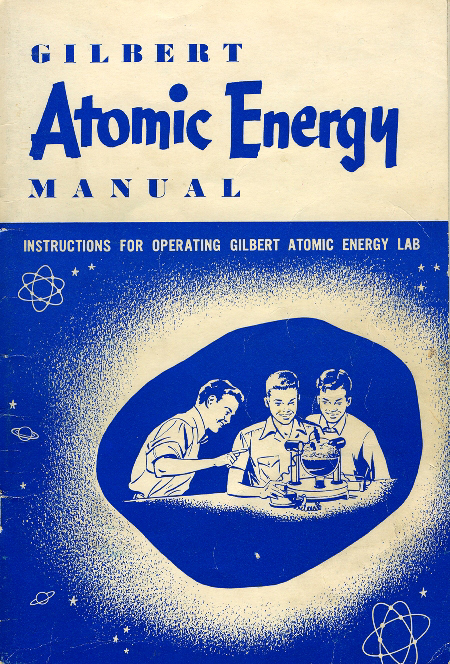
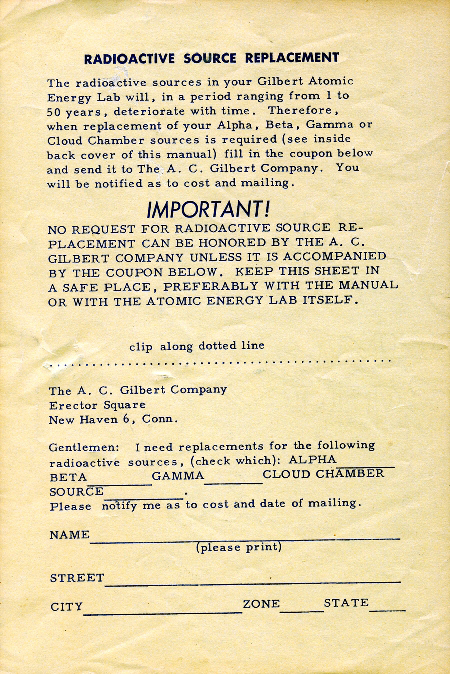
The First Atomic Energy Lab Kit
Sometime in late 1947, Gilbert’s competitor, the Porter Chemical Company, became the first to produce laboratory kits for children that included an atomic energy component. They seem to have done so with two sets: Chemcraft chemistry kit No. 10 (ca. $10) and kit No. 25 (ca. $25)—get the numbering system?
The atomic energy components of kit No. 10 were “actual specimens of Uranium Ore, “The Story of Atomic Energy,” [and a] Spinthariscope.” Chemcraft’s top of the line, Kit No. 25, also included a “radioactive screen.” According to an account in the July 17, 1948 issue of the Hagerstown Daily Mail, this use of the uranium ore required that Porter Chemical Company obtain a license from the Atomic Energy Commission.
Thanks to Bill Kolb for this extraordinarily generous and wonderful donation!
Reference
Frame, P. and Kolb, W. Living with Radiation: The First Hundred Years. Fourth edition. 2006.
